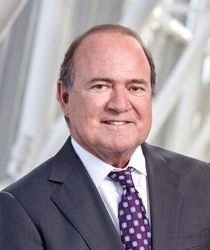Ringing In The New Year With The SECURE Act
In connection with the federal spending legislation, Congress has passed, and the President has signed, the Setting Every Community Up for Retirement Enhancement Act or the SECURE Act. The SECURE Act includes significant changes to the laws affecting retirement plans. The law focuses on encouraging lifetime income or annuity forms of benefit payments and increased contributions through 401(k) plan automatic enrollment. The various provisions of the SECURE Act have their own effective dates. Below is a brief summary of the changes.
Lifetime Income and Annuity Provisions
The SECURE Act strongly encourages the offering of lifetime income products through defined contribution plans. Effective immediately, the law includes a safe-harbor plan fiduciaries can follow in the selection of lifetime income or annuity products. The safe-harbor includes various specific requirements.
In addition, the annual defined contribution statement must include a statement of the income stream equivalent a participant would receive based on their benefit. This disclosure requirement will be effective 12 months after guidance is issued by the Department of Labor.
Effective for plan years beginning after December 31, 2019, defined contribution plans may allow a direct transfer of annuity forms of distribution to an IRA or another qualified plan when the annuity option ceases to be available under the plan.
Automatic Enrollment Limit
Effective for plan years beginning after December 31, 2019, a 401(k) plan with automatic enrollment may provide for an automatic enrollment percentage up to 15% rather than the prior limit of 10%. However, the 10% limit must remain in effect for the participants’ first year of enrollment.
Pooled Employer Plans
The Multiple Employer Plan rules are relaxed for plans offered by a “pooled plan provider.” Where unrelated employers participate in a single plan sponsored by a “pooled plan provider,” the participating employers are no longer subject to a commonality requirement. The pooled plan provider is the fiduciary that serves as the plan administrator. Further guidance and draft plan language will be issued and the pooled plans shall be available for plan years beginning after December 31, 2020.
Safe Harbor Notice
If an employer satisfies the safe-harbor requirements in order to avoid non-discrimination testing by making an employee non-elective 3% contribution, the annual safe-harbor notice is no longer required. The provision is effective for plan years beginning after December 31, 2019.
401(k) Eligibility and Long-Term Employees
Effective for plan years beginning after December 31, 2020, in addition to a maximum eligibility period of one year of service, plans must allow employees to participate in a 401(k) plan if the employee has three consecutive years with 500 hours of service.
Non-Spouse Designated Beneficiaries
Effective with respect to employees who die after December 31, 2019, non-spouse beneficiaries must receive their distributions, with some exceptions, over a period not to exceed 10 years, rather than over their life time.
Other Provisions
There are other provisions in the SECURE Act impacting retirement plans including:
- The age by which minimum distributions must begin is increased from 70½ to 72. This provision is effective for required minimum distributions that are required after December 31, 2019.
- Effective January 1, 2020, the 10% early withdrawal penalty will not apply to withdrawals up to $5,000 within one year of the birth or adoption of a child.
- Effective immediately, participant loans cannot be taken through a credit card or similar arrangements.
- Effective for taxable years beginning after December 31, 2019, credits for small employer plan start ups are increased and credits are given to small employers who implement automatic enrollments in 401(k) plans and SIMPLE IRAs.
- For returns due after December 31, 2019, the Department of Labor filing penalties are increased.
- Effective for tax years beginning after 2019, the maximum age for IRA contributions is repealed.

